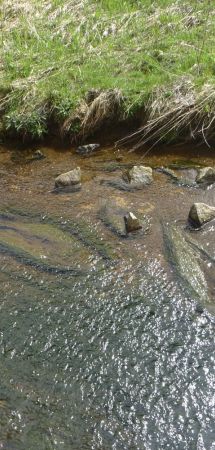
Hydrobiology and microbiology are significant in: assessing the ecological state of steady and running waters, studying eutrophication and acidification, evaluating the state and efficiency of water management and treatment technologies as well as for operations with cooling water.
Microorganisms can indicate both the processes that are in progress and the efficient technological conditions or status but they can also be used for biotechnological purposes. Selected microorganisms are even used in laboratories or semi-operations to detect the efficiency of newly introduced materials, agents and intermediates.
In this respect, biology mainly focuses on applying theoretical knowledge and its utilization to indicate the status of processes. Results of biological analyses should enable a technologist to draw relevant conclusions and take effective measures. What is also important is the legislative framework where the knowledge from biological fields is implemented. The future of biology lies in the application of molecular biology methods (PCR, DGGE etc.). All the methods are applicable both in teaching and laboratory practice. Another advantage is the connection of undemanding microscopic methods with cultivation methods and the methods carried out on a purely molecular-biological material.
Effects on microclimate, air quality, water and soil ecosystems within the scope of hydric recultivation of brown coal mines.
Extensive hydric recultivation, flooding the residual pit of the Most – Ležáky quarry executed within the scope of revitalising the area affected by mining will significantly improve the countryside characteristics north of the Most city. The aim to recultivate brown coal mines is a subject to the assessment of environmental impacts (EIA). The objective of this assessment is to identify, describe and evaluate the expected effects of the projects being prepared (buildings, activities and technologies). The result of the project will consist of the complex methodology quantifying environmental impacts of brown coal mines recultivation. In accordance with the framework regulation for water management 2000/60/ES the assessment of the local environmental status is performed mainly on the basis of water and periphyton samples (the main components being plankton and benthos).
Importance of drinking water quality degradation occurring in its transport and accumulation
Drinking water will be safe in the whole supply system only if contamination of water resources is prevented, water is treated sufficiently (the pollutants present are removed completely or partially to comply with requirements for quality and safety of drinking water) and also the secondary contamination is prevented during drinking water accumulation and distribution and operations with it. Water tanks and towers as buildings cannot be substituted in the water supply system and they also largely contribute to the reliability of the system, its maintainability or vulnerability. These buildings are strategically significant and can influence the water quality. Their location also greatly affects economical costs of the water supply system and its operation.
Aspects for assessing the impact of water tanks on the quality of the water supplied were solved to define both external and internal factors which crucially influence the water quality and its stability in accumulation tanks as well as in the distribution network. There were identified different levels of importance of partial causes affecting the quality of treated, accumulated and transported drinking water, which was a significant step allowing us to focus on the most effective methods minimizing the formation of biofilms, present biological life in water tanks and towers and to specify the rules for exchange of water in accumulation tanks. A prototype of a filtration device was developed to be placed into venting shafts in water tanks. Technical directive I-D-48 Construction arrangement, operation and maintenance of water tanks was prepared during the project solution and it became the basis for the efficiency verification of the directive of ČSN 73 6650 Water tanks, which applies to the design and operation of water tanks (both of the ground and tower types, which are the components of the water network supplying the public with drinking water).
Currently, the issues related to biologically stable drinking water are being researched further in accordance with Plans for Drinking Water Safe Supply (Water Safety Plans) and hazard analysis (HACCP).
Research of nanosurfaces
This workplace belongs to the NANOPIN research centre. In its biological section it implements the methods testing material surface properties (applied on glass, fabrics, pipelines in contact with water). Currently, a directive is being prepared dealing with testing the antibacterial properties of nanosurfaces. Simple methods testing material surface properties will be then put into practice.
Tested materials will also include filtration materials that are expected to become a part of filters used in water treatment operations.
New materials and technologies for material conservation of historical monuments and preventive monument care.
The project goal is to develop new materials and technologies and to verify their functionality for the following purposes: efficient but gentle removal of unwanted secondary layers from material surfaces, mainly the layers of oils and polymers; consolidation of construction monuments damaged by weathering and impregnating the porous inorganic substrate with innovated solidifying materials; preventive protection of materials forming the monument surface against weathering effects, namely water, and against biodegradation by applying new hydrophobic and biocidic agents. Newly developed materials and technologies will focus on the increased efficiency and care of applications with regard to the materials treated and the environment, prolonged lifetime, reversibility and the quality of processes comprising monument preventive, restoration and conservation actions. The development stage is to implement new knowledge from the basic material research, mainly nanomaterials and nanotechnologies including their combinations with traditional materials and methods. The research focuses on solving the tasks of the topical priority Materials and technologies for protection and preservation of cultural heritage of the NAKI Program.
